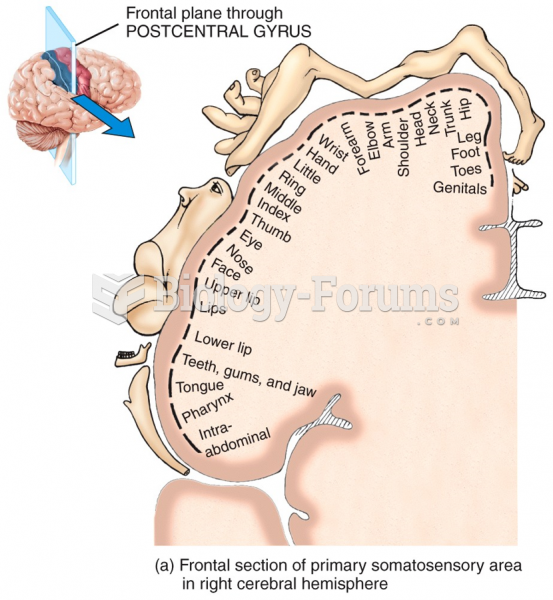|
|
|
Approximately 500,000 babies are born each year in the United States to teenage mothers.
In Eastern Europe and Russia, interferon is administered intranasally in varied doses for the common cold and influenza. It is claimed that this treatment can lower the risk of infection by as much as 60–70%.
Your skin wrinkles if you stay in the bathtub a long time because the outermost layer of skin (which consists of dead keratin) swells when it absorbs water. It is tightly attached to the skin below it, so it compensates for the increased area by wrinkling. This happens to the hands and feet because they have the thickest layer of dead keratin cells.
Cytomegalovirus affects nearly the same amount of newborns every year as Down syndrome.
Earwax has antimicrobial properties that reduce the viability of bacteria and fungus in the human ear.







